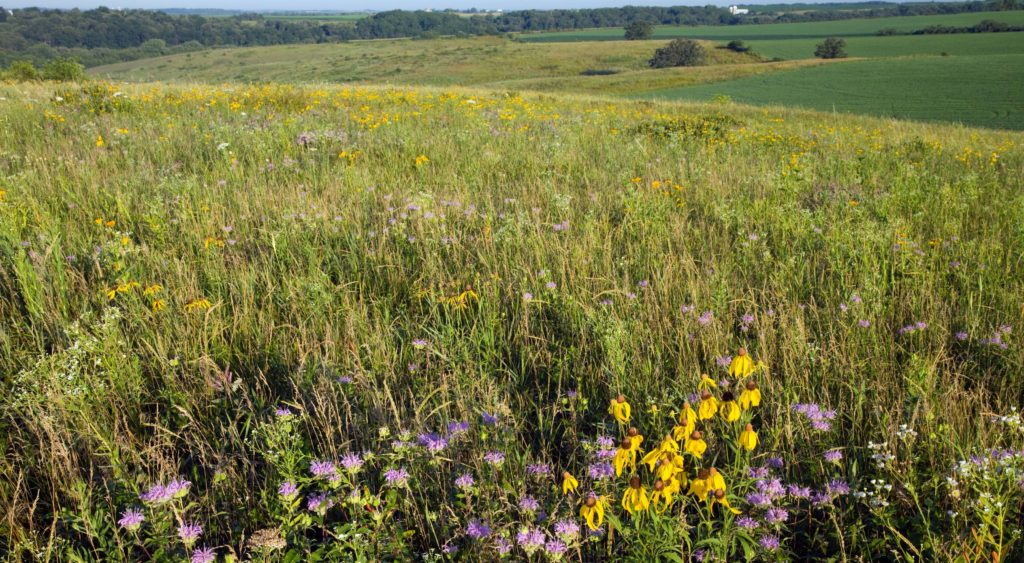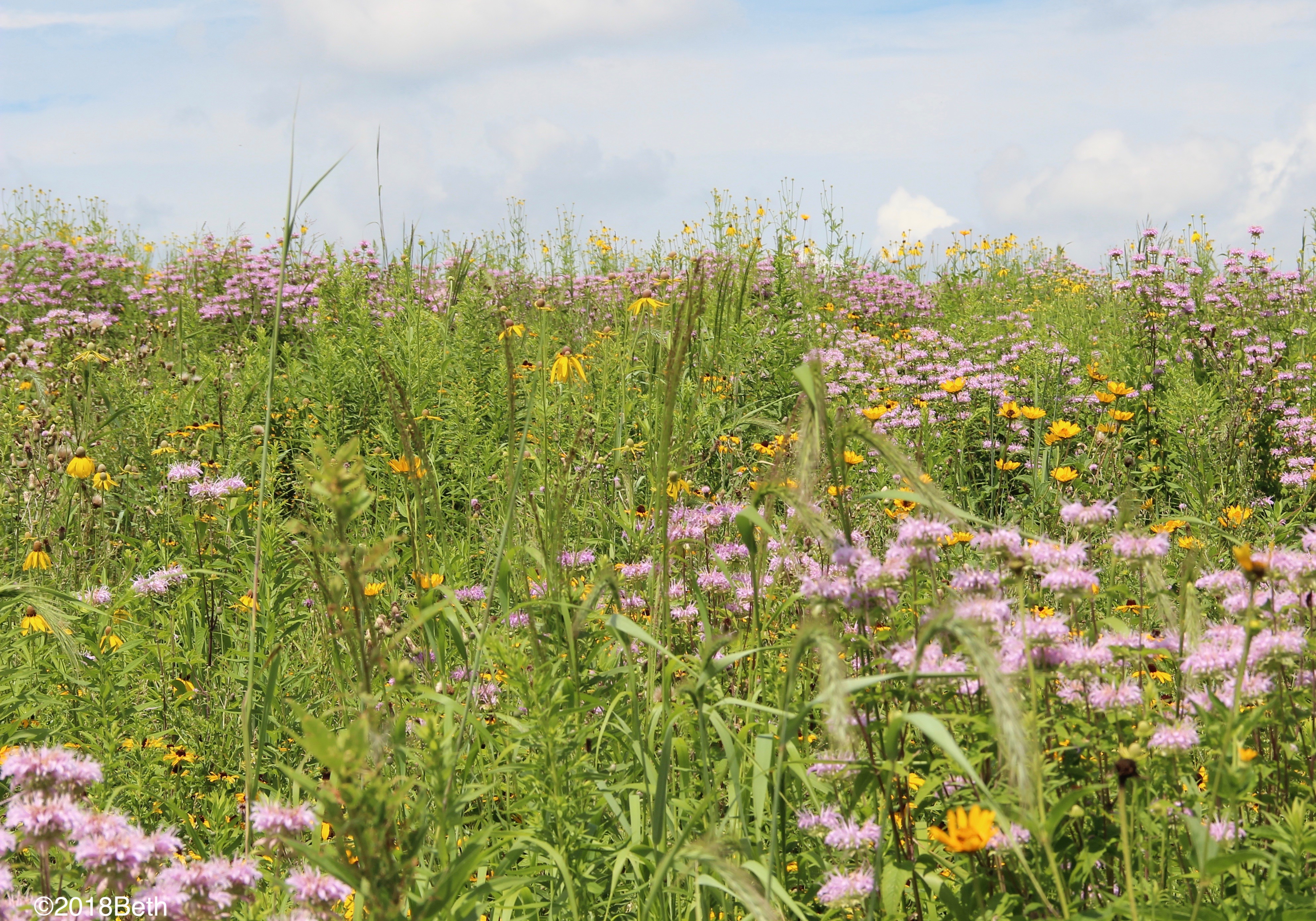Native Planting: Trees, Shrubs, Wildflowers, & Grasses
Native Trees and Shrubs
Native plantings, such as trees and shrubs, provide aesthetic value, erosion control, as well as provide food, shelter, and bedding habitat for wildlife. Successful planting requires an educated selection of species based on site conditions, proper site/soil preparation and planting technique, as well as post-planting maintenance. Some examples of commonly planted native tree and shrub species include oaks, hickories, black walnut, black cherry, black chokeberry, elderberry, and persimmon.

Herbaceous Plants: Forbs & Graminoids
Planting a mix of native forbs (flowering plants) and graminoids (grasses, sedges, and rushes) provide aesthetic value as well as sources of food and habitat for wildlife and pollinators. With many options of native herbaceous plants to select from, it’s important to first consider the conditions of the site to be planted and what your primary objective for the planting is. For example, a planting for pollinator habitat may contain a higher density of forbs compared to a planting for wildlife, which may contain a higher density of legumes and graminoids. A successful planting requires careful site and species composition selection, proper site/soil preparation, as well as continued maintenance post-establishment.

More information:
The importance of hardwood tree plantings
Planting forest trees and shrubs in Indiana

